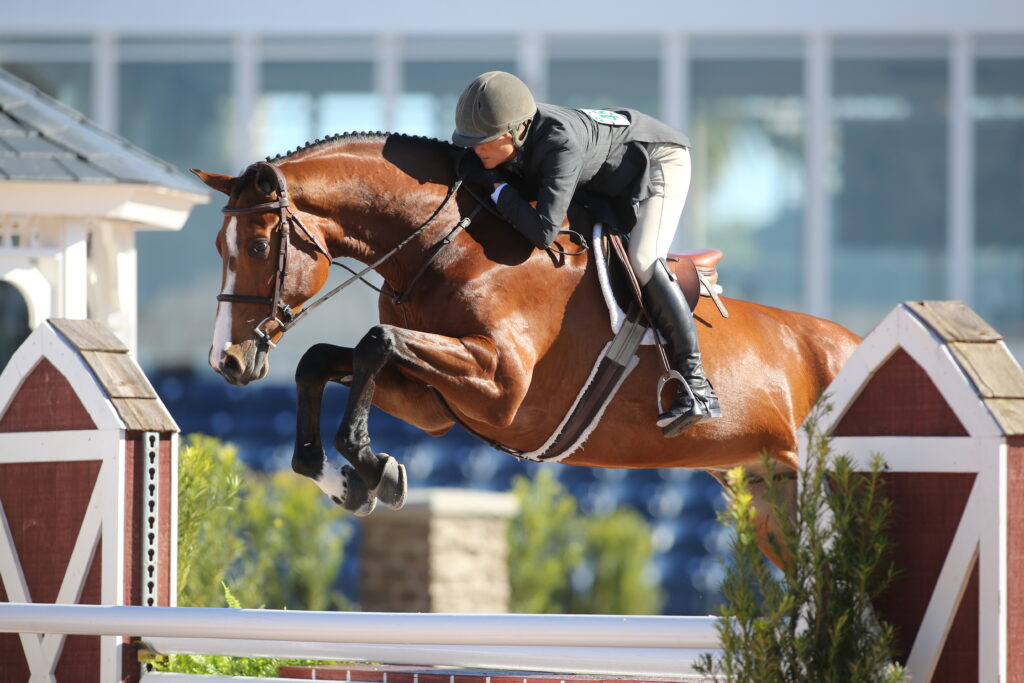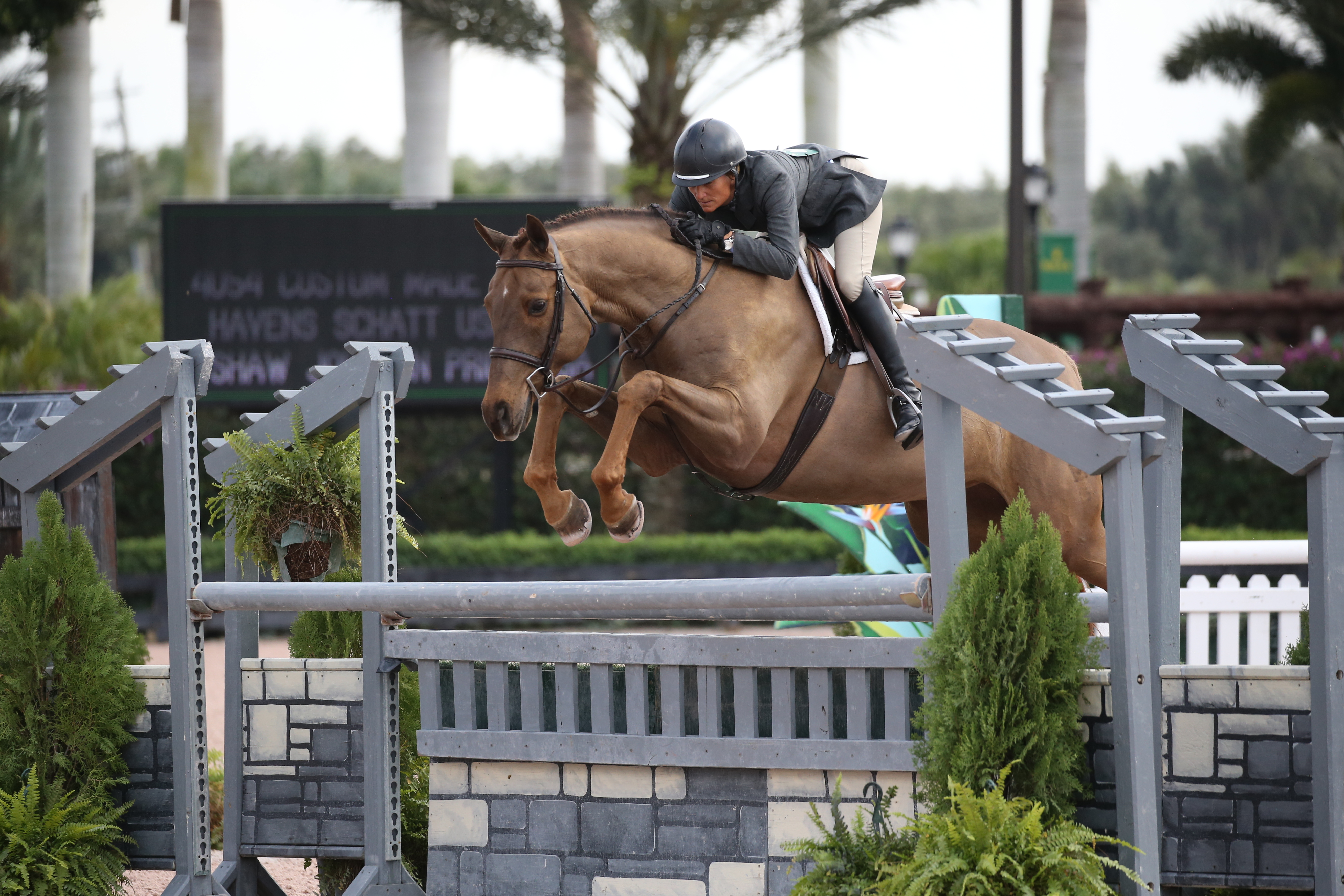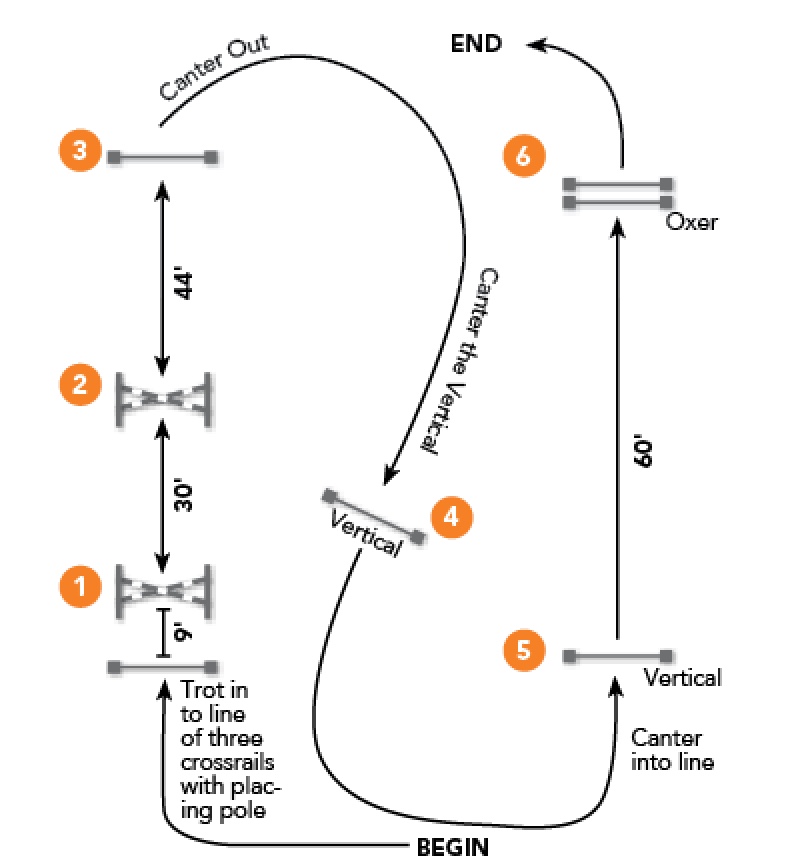Our motto when starting young horses over fences is: Take the time to let them evolve to be the best horses they can be. Bringing along a young prospect is an amazing and rewarding journey, but it must be done through a slow, methodical, reliable process that allows him to correct his early mistakes and build confidence. Youngsters thrive in our structured training program at Milestone; they all go to the same “school.” Every day, we try to build a bit of confidence and add just one more step.

It’s important that a young horse knows there is a routine: He gets fed at seven, goes in the paddock at some point and knows when he gets ridden. We set our schedule so we can try to keep the same time frames every day. Young horses love consistency and the routine helps to build trust.
The best way to train a youngster is to listen to him, to ask him to speak to you. Each day ask him a new question then listen and see if he can answer. For example, ask him to lengthen his stride at the trot or canter, then collect, then lengthen again. If he can answer your question, you’re making progress. If he can’t, slow down and go back a step. Remember that while you may be applying a structured process, each horse has his own personality, physical build, mental ability—and each horse grows at his own pace.
It can be challenging to be this patient. The worst thing you can do to a young horse is be too human: to have set goals or a schedule for winning blue ribbons. Don’t impose your own dreams and timelines on him. Give him the chance to bloom.

Introducing a Young Horse to Jumping
In our system, we start by trotting and cantering simple poles on the ground, then progress to trotting and cantering a single crossrail lower than 1 foot high. We like to use crossrails in the beginning, as they help horses stay straight and encourage them to jump squarely in front. We frequently use a placing pole (only at the trot) set 9 feet in front of a fence. This helps the horse judge his takeoff and jump in a nice, round arc. The goal at this stage is to teach him to stay straight and flowing forward through each exercise while you support him with your leg and a light, balanced seat.
Some horses rush the jumps in the beginning, because they think that’s easier than using their hind ends and backs to negotiate the jumps. This is an important moment to teach your horse to slow down during the approach. Do this at the trot (never the canter): Trot toward a small jump with a placing pole and then stop your horse about 15 feet in front of the placing pole. Wait a few seconds until he settles, then pick up the trot, make a circle and try the exercise again. Repeat this until he can approach the jump without rushing.
Once a youngster is jumping single crossrails confidently, we progress to trotting into simple combinations and lines of two small crossrails, set at predictable, comfortable distances—for example, about 30 feet for a two-stride line. Once he is comfortable with these two crossrails, we add a third crossrail, so he is trotting into a two-stride, followed by three strides (approximately 44 feet) to the third element. (Note: You may need to adjust these distances up or down a bit, depending on your horse’s stride.)
When this feels easy to the youngster—after plenty of repetition—we use the same exercise to introduce him to new types of jumps. Keeping everything else the same, we change the second crossrail into a vertical, then a ramped oxer, then a square oxer over a period of weeks. We also gradually introduce jumps made of different materials, such as a small flower box or brush jump, always as the “out” jump of a line, still keeping the fences low.
Next, we teach the horse to canter to that original straightforward line of two small fences—but without the placing pole. Set this as a four-stride line, at approximately 60 feet.
Finally, after months of teaching these basic individual elements, we put them all together into a simple course: trotting into a three-element combination with a placing pole on takeoff, followed by cantering a single fence, then cantering a four-stride (60-foot) line. When a young horse can complete this successfully, we know he has a good jumping foundation.

See also: What Makes a Winning Hunter Round
As you follow this basic system, remember that a horse can learn a bad lesson as easily as he can learn a good lesson. So if things are out of control—if he is bolting or spooking—just stop for a second and take a deep breath. Pet him. Let your heart rate (and his) go back down. Then quietly pick up your trot or canter and try again. Remember that you are looking for success; if this is too much for your horse, then take a step back.
Young horses often go through phases where they resist so much that you don’t know how to handle it. With horses, you never know it all; these are living, breathing animals. If your frustration level gets unmanageable, be humble. Call a trainer; go get some help.

Here are some other good rules to follow:
• Leave your expectations back at the barn. Don’t start a training session with a hard goal or expectation of what you are going to achieve. Just pick up the trot and be open to what horse you have that day; then decide what to accomplish.
• Never enter into an argument that you don’t think you can win. If you are not in the mood or if you don’t have the time, avoid the fight. It’s not fair to either of you. Maybe just do a simple walk, trot, canter or send him out on the longe line. Then head back to the barn.
• Give your horse tests that he can achieve. Start each exercise with poles on the ground before gradually replacing them with jumps, one at a time. Make each addition an easy lesson for your horse so that he continually builds on his prior success.
• Always ensure that your horse is balanced and quiet before you head to the next element. If you need to circle, that’s OK.
• Never surprise a young horse by asking him to jump a type of fence that he hasn’t seen before. While mounted, walk him up to each new jump on an angle with his body bent slightly away from it, so that he doesn’t think he is being asked to jump it. This allows him to look at it without shying, teaching him to obey you even in scary situations. Don’t let him touch the jump with his nose, because he might scare himself by blowing on a flower, for example.
• Make the exercise easier whenever you have difficulty. For example, replace the jumps with poles on the ground. Or shorten a line by a stride (change a four-stride to a three-stride, for example), so there’s less distance for your horse to have to stay straight, quiet and confident. Keep the prior exercise set up somewhere in the ring so that you can easily return to it if your horse gets worried about the current exercise.
• Stay calm and controlled, regardless of how your horse reacts to any new situation. Remember, he has to believe you know what you’re doing, even if you are not so sure yourself!
• Know when to quit. As humans, we tend to be so goal-oriented that we always want more: “This is going so well, let’s try something else.” But a green horse needs to learn incrementally. When you have achieved something, when you are proud of your horse, call it a day.
ABOUT HAVENS SCHATT AND FRED COMMISSAIRE
Havens Schatt has enjoyed a long, successful career in the horse industry, first as a junior, then while training under Tom Wright for nine years before starting her own business in 2001. She has consistently won championship and reserve ribbons at major horse shows, including Devon and Indoors.
Schatt runs Milestone Farm in Georgetown, Kentucky, with her husband and business partner, Fred Commissaire. Commissaire was born and raised in Paris, France and competed at the upper levels of junior three-day eventing. He graduated from the prestigious Saumur cavalry school and competed in international show jumping for the French army.
Together, Schatt and Commissaire have started many young horses who now win at the top of the horse show game, including Set to Music, Custom Made and Bacardi.










